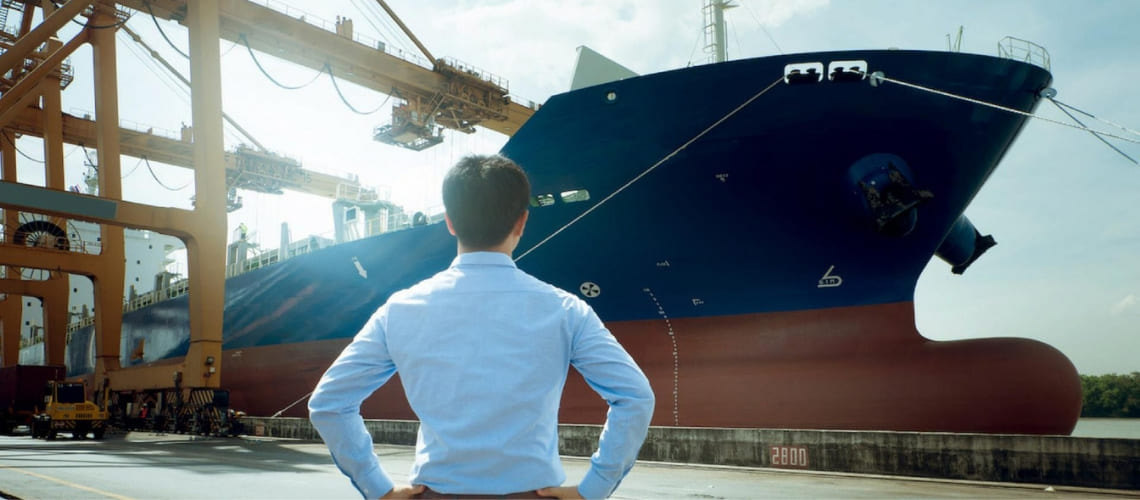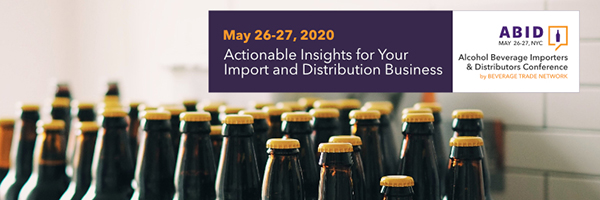Jessica Brady, Marketing & Sales Development Manager at JF Hillebrand USA, guided participants about major changes occurred within the Shipping Industry.
Within the global wine industry, the supply chain now matters more than ever. How do you get a wine from France or Italy to New York on the East Coast of the United States? What are the particular challenges you face if you are delivering that wine to locations around the U.S. that are far inland? To answer those questions, Jessica Brady, Marketing & Sales Development Manager at JF Hillebrand USA, guided participants of the ABID Conference through a comprehensive discussion of the challenges facing importers, as well as the major changes that have occurred within the shipping industry in just the past 10 years.
International shipping issues
“What’s happening in the industry will affect you,” Brady told participants. For one thing, the Top 5 shipping carriers in the world now control a majority (71%) of global shipping capacity, and these carriers work within shipping alliances. As a result, there are only a handful of companies that will be able to get your wines from an overseas destination to the United States.
And that issue is intensified by the fact that there is much more demand than supply when it comes to international shipping capacity. In response, container ship size is increasing so that these ships can carry more freight. And that’s putting a massive strain on primary shipping ports like the Port of New York/New Jersey, which is still the most important port for U.S. importers.
Brady illustrated this issue by looking at the process of shipping French champagne to the U.S. East Coast. There are only two primary ports in Northern Europe that will ship the champagne, and there are only 3-4 global shipping alliances operating out of those ports. As a result, there may only be 1 sailing per week out of Northern Europe to the East Coast for champagne.
That relative shortage of shipping capacity puts enormous emphasis on the ability to forecast demand in advance for importers and distributors. What happens if it’s the holiday season, customers are clamoring for champagne, and there is not another shipment due for another week?
To cope with these factors, Brady makes a few recommendations about how to deal with the changing structure of global supply and logistics. For one, it’s imperative to streamline and digitize operations as much as possible. This can help to minimize demurrage and detention at a port. While importers have a limited amount of free time for port storage, if wine waits at a port for too long, per diem (daily rate) fees will start to accrue.
And there are plenty of other steps that importers can take to make shipping wine as pain-free as possible. For example, they can choose to clear inland cargo at a port, where the process is faster and more streamlined, rather than waiting to clear the cargo at an inland location like Chicago. Moreover, importers should attempt to ship legal road weight, even if it means additional trips, rather than trying to ship overweight loads (which many shipping companies will not accept, or charge extra for).
Domestic shipping issues
And what about domestic shipping issues? After all, even after you’ve off-loaded the wine shipment at your warehouse in the New York area, you still need to get that wine to locations around the country. Shipping by truck is still the preferred method, but that method of transportation also comes with its share of issues. Trucking companies are also facing increased demand. On top of that, they are facing a driver shortage, which means that simply might not be enough trucks and drivers to transport your wine from New York to, say, Philadelphia or Boston.
And if you are shipping the wine further inland to a city like Chicago, matters get even more complicated. That’s because you will have to carefully calculate how long it actually takes to ship your wines. Due to regulatory requirements, drivers can only operate a vehicle for 11 consecutive hours, and that includes every aspect of a trip - such as loading and unloading and fueling. Add in traffic congestion and potential weather issues, and a trip that once used to take just one day can now take two days.
Brady, though, is quick to offer a few suggestions to get around these issues. For one, advance forecasting (5 to 7 days in advance) can help to alleviate these problems. Moreover, it can sometimes be more efficient to consider other shipping alternatives, such as rail. And, finally, warehouse flexibility also plays an important role in making sure that all deliveries stay on schedule. But just remember, says, Brady - even if you use rail for some part of the shipment, you will still need to use a truck to get the wine from port to rail and then from rail to the final destination.
Other risk factors
Finally, there are a number of other factors to take into consideration when planning a shipment. Weather and transport risks, for example, are becoming more and more of an issue. A hurricane event, a winter snowstorm, or an unexpected California wildfire can all throw your shipping and logistics out of sync. What happens, for example, if your wine cargo is sitting at a port for too long due to weather issues and the wine is not in temperature- and humidity-resistant shipping containers? That raises the whole issue of insurance, and how much you are willing to spend to make sure that you do not suffer a catastrophic loss of an expensive wine shipment.
The last variable to consider, says Brady, is technology transformation. In other words, digital solutions are helping to modernize the supply chain, and that’s a good thing. The more you can integrate your own shipping and logistics into this digital supply chain, the better. While we may still be five years or more from really futuristic IT changes disrupting the wine industry - such as driverless trucks that deliver wine for you without the need for human drivers - it’s far more advisable in the short term to focus on IT infrastructure and ways that you can tap into the power of big data.
By keeping all of these factors in mind, you will be able to build a resilient business. It won’t be possible to mitigate supply chain risk entirely, of course, but you will be prepared for any contingency. Shipping wines from anywhere in the world to the United States is not without its share of risks, but the process is so well established that there are plenty of workarounds for just about any major logistics issue.
Overall, the two-day ABID Conference in New York City provided a detailed, comprehensive, and eye-opening approach to the U.S. import and distribution business. Participants walked away with real, actionable steps on how to grow their business and optimize its future profitability.




